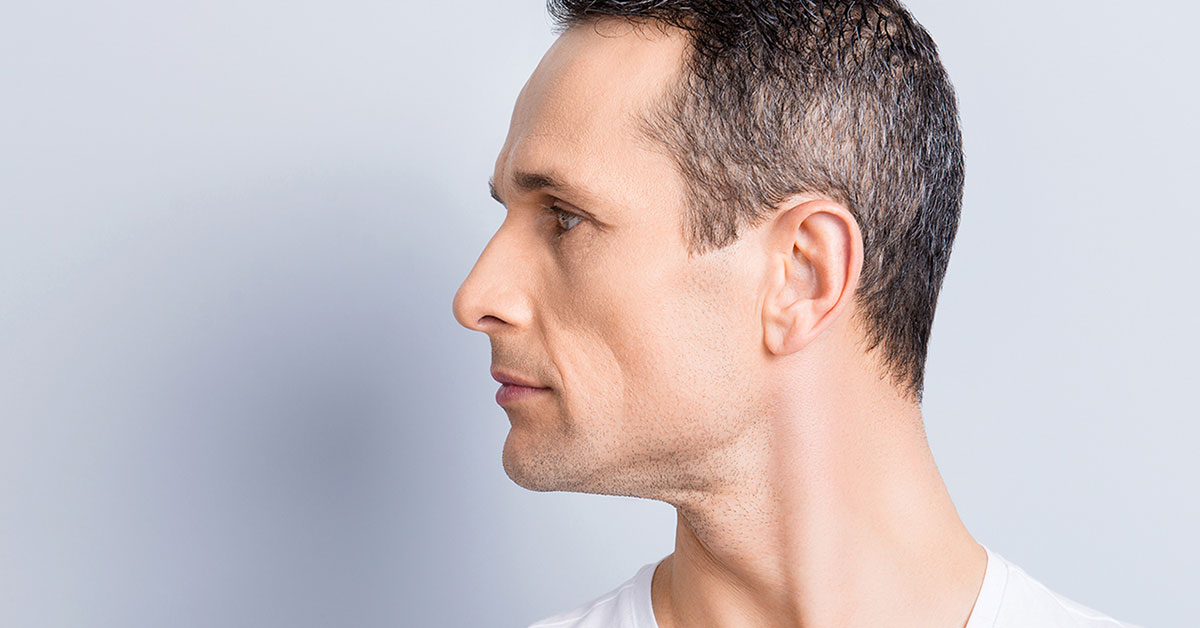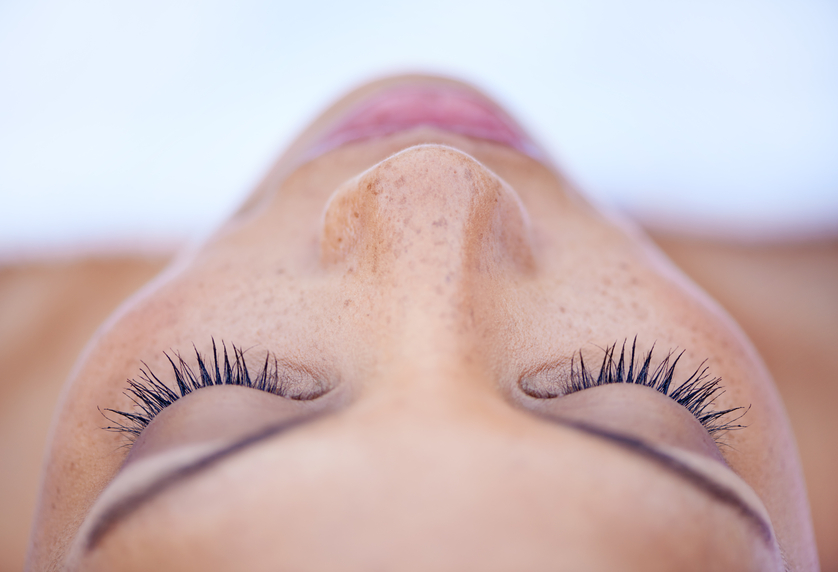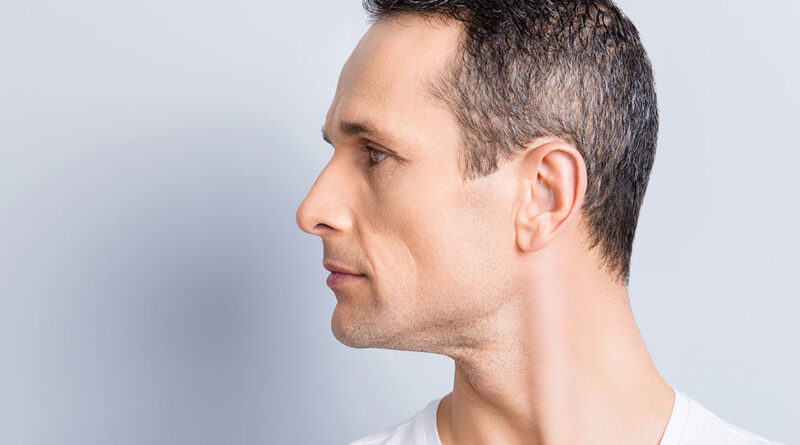Rhinoplasty is surgery of the nose to enhance its function or change its shape (WebMD.com, 2021).
It may be done for the following reasons:
- Straightening the bridge
- Eliminating a hump on the nose
- Modifying the nose after an injury
- Reshaping the tip of the nose
- Opening breathing passages
- Adjusting the size of the nostrils
- Changing the size of the nose
- Saddle nose due to trauma or other health conditions
You can have a nose job for medical reasons or change your appearance.
Reconstructive rhinoplasty is a procedure done to correct unpleasant outcomes of original rhinoplasty surgery. Most patients who seek reconstructive rhinoplasty feel the results they got are too unnatural, do not match other facial features, or the outcomes are not as defined as expected. Many people also suffer from under-corrected or new nasal obstruction after the initial rhinoplasty.
Challenges Involved with Reconstructive Rhinoplasty

source: plasticsurgery.org
There is no specific number of constructive rhinoplasties that you can get. However, there is a limited amount that you can effectively get. Each extra nose job has added complications, and when complications increase, the risk also increases. This results in a diminished ability to change appearance. Due to this, ensure that you consult the right surgeon for any reconstructive procedure (American Society of Plastic Surgeons, 2019).
Factors that Determine the Number of Reconstructive Rhinoplasties you can get
Complexity
The complexity is among the major determinants of the number of times you can have reconstructive rhinoplasty. The procedure gets more complex with each reconstruction. The higher the complexity, the more limited the choices for alteration. After the initial reconstructive rhinoplasty, there will be reduced abilities to make remarkable changes. But, this may vary depending on what the reconstructive surgery is further correcting.
For instance, if the initial reconstruction was to rectify a breathing issue and a subsequent one to change the nasal tip, having overlapping complications is higher. Complications may increase with various surgeries on the same area of tissue.
The Surgeon

source: plasticsurgery.org
Your rhinoplasty surgeon’s abilities, experience, and skills will determine the procedure’s outcome. If you don’t like the initial result, you may move to another surgeon and ask for previous reviews, but it is also good to stick with the same surgeon.
One advantage of going to the same doctor is that they are familiar with you and your work, meaning they understand what needs correction. The doctor will succeed in correcting the problem with ease. But, if you insist on looking for a new doctor, you can search for the one you feel comfortable with.
Be cautious of doctors who over promise on probable outcomes. The best reconstructive rhinoplasty surgeons are those who appreciate the limits of tertiary and secondary nose jobs. This can influence facial symmetry and aesthetics to define smaller alterations that will produce pleasant outcomes. Before settling on a rhinoplasty surgeon, ask for evidence of the reconstructive work for other clients. Please take note of how they have handled similar nose styles and issues (American Society of Plastic Surgeons, 2019).
The Patient
The patient should acknowledge the limitation of a nose job just as the surgeon does. With every different reconstruction, you may have to alter your expectation of what is realistic. A reputable surgeon will help you accomplish and manage your expectations. However, the patient must remain grounded in the procedure’s outcomes with all elective surgeries. If a patient has impractical expectations of the reconstructive surgery, they probably won’t be satisfied (WebMD.com, 2021).
Scar Tissue

source: gardnerplasticsurgery.com
Another thing that reconstructive surgeons must come into terms with is the scarring that stems from the original procedure. The scar tissue present, the more difficult and longer the procedure becomes. The surgeon needs to make carefully planned incisions to have appropriate access to rectify the nose while being cautious not to build additional scarring. Scarring can change the way the nose heals and settles after reconstruction surgery in unforeseen ways if the reconstructive rhinoplasty fails to produce structural strength (Mayoclinic.org, 2022).
Nose Strength
Often, the nose structure needs reinforcement to maintain its shape after having the first rhinoplasty surgery. The best way to add the structural strength of the nose is to use septal cartilage grafts. In reconstructive cases, it is mainly depleted by the initial surgery. Therefore, reconstructive rhinoplasty surgeons may need to use cartilage from the ear or rib.
Septal cartilage is often the first choice as it is preferred over rib or ear cartilage grafting. The surgeon may choose ear cartilage if camouflage grafting is used or there is moderate weakness. Although some rhinoplasty surgeons avoid rib grafting as they fear an outcome that is too stiff or too large, most expert reconstructive rhinoplasty surgeons have mastered rib sculpting to exploit its strengths while developing a natural look.
The Unknown

source: drjamesridgway.com
Even if the surgeon has access to medical records from the initial nose surgery, reconstructive rhinoplasty surgeons sometimes face unknown variables during the reconstruction procedure. The surgeon does all they can to prepare for the unknown while also making instant decisions during the procedure as problems emerge.
Due to this, the patient should pick an experienced reconstructive rhinoplasty surgeon. Surgeons who often perform reconstructive procedures are best suited to anticipate potential problems before surgery and have several options to help deal with the unknown during surgery. Since the rate of complications after reconstructive rhinoplasty is higher than after initial rhinoplasty, the specialist rhinoplasty surgeon has mastered reducing them through the intraoperative selection of suitable grafts and placing them in the right place through appropriate techniques (American Society of Plastic Surgeons, 2019).
Each case has unique challenges and needs careful approximation of the deformity preoperatively, an understanding of available techniques necessary for correction, a proposed sequence and plan of action, and thorough, adamant implementation of the surgical procedure.
Each surgical operation is predisposed to complications, and the only surgeon who does not encounter complications is one who does not operate. An understanding of significant complications is crucial to enlighten the patient to help make an informed decision.




